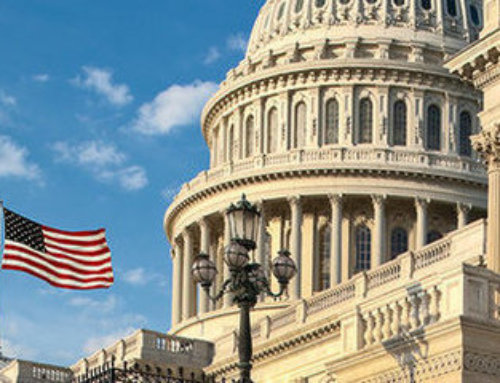With Election Day less than one week away, our television screens and social media platforms have become inundated with political pundits, editorial desks, and even friends gazing into their crystal balls and making predictions about the final results on November 8. In our final article in the 2016 Election Coverage we, here at the American Academy of Sleep Medicine, wanted to keep our members up-to-date on the latest polls for the Presidency, and recent polls tracking nine U.S. Senate races of note and the expected make-up of the U.S. House of Representatives.
President of the United States of America
In the world’s most highly watched election, Hillary Clinton and Donald Trump square off in a historic contest to become the 45th President of the United States. While the summer national polls fluctuated back and forth between the candidates, the National Polls had stabilized until revelations of additional emails to be examined and candid locker room talk forced potential voters to reevaluate the candidates. A recent amalgamation of 6 national polls published by RealClearPolitics.com has Hillary Clinton still leading Donald Trump by slightly less than 2% (47.0% to 45.3%).
However, as our Civics class taught us, the popular vote in a Presidential election does not actually elect the President. Instead, the voters select a slate of delegates pledged to the candidate who won the popular vote in the state (or district) to the Electoral College. The number of Electoral College Delegates for each state is based upon a delegate for each congressional district within a state and one for each senator for a total of 535 electoral votes among the states—the final 3 Electoral delegates represent the District of Columbia. Thus, a Candidate must achieve a majority of the 538 possible Electoral College votes or at least 270 to be declared the winner. As of today (11/3), there remain ten battleground states with 160 electoral votes where the poll data remains inside the margin of error (Pennsylvania, Florida, Ohio, Arizona, Colorado, Nevada, Iowa, Texas, North Carolina and Georgia) which will determine the Presidency.
United States Senate
On November 8, not only will the race for the Presidency come to an end, the campaigns for 34 US Senate seats will also conclude. These 34 Senate Seats consists of 10 Democrats and 24 Republicans. 25 of these seats (including retiring Senator Barbara Boxer’s California seat and Senator Chuck Schumer of New York’s seat) are rated as safe retentions by their party). Below are the 9 most competitive seats, and the contenders:
Florida: A recent CNN/ORC International poll of likely Florida voters has placed the race between Senator Marco Rubio (R) and Representative Patrick Murphy (D) within the margin of error.
Illinois: Recent polling average compiled by RealClearPolitics.com has challenger, Representative Tammy Duckworth (D) leading incumbent Senator Mark Kirk (R). A win by Representative Duckworth would shift a seat to the control of the Democratic party
Indiana: This summer, former Senator Evan Bayh (D) announced in intention to run for retiring Senator Dan Coats (R)’s Senate seat, the seat Senator Bayh had previously held from 1998-2010. Senator Bayh is competing against Representative Todd Young (R) who represents sections of southern Indiana in the 114th Congress
Missouri: In an election few pundits predicted would become competitive, Senator Roy Blunt (R) and his challenger, Missouri Secretary of State Jason Kander (D), are running neck-and-neck as the final weekend of campaign season looms.
New Hampshire: In the last two weeks, polls in New Hampshire have shown both Senator Kelly Ayotte and her opponent, current Governor Maggie Hassan, as leading among likely voters.
Nevada: Representative Joe Heck, an emergency department physician, (R) and former Nevada Attorney General Catherine Cortez Masto (D) are running in a tight race to take over retiring Minority Leader Harry Reid’s Senate seat
North Carolina: In a close battle, incumbent Senator Richard Burr (R) is facing a strong challenge from State Representative Deborah Ross (D) in his second reelection campaign.
Pennsylvania: In the most expensive US Senate election in history, Katie McGinty (D) and incumbent Senator Patrick Toomey (R) have filled the airwaves with political ads as national pundits consider this race to be a bell weather race which may likely determine control of the US Senate.
Wisconsin: Former Senator Russ Feingold (D) is running against his 2010 rival, Senator Ron Johnson, in a bid to recapture the Senate seat he lost 6 years ago. In recent days, polling has indicated this race has narrowed.
House of Representatives
Every 2 years, all 435 seats in the House of Representatives and the 6 non-voting Delegates from US Territories come up for election. For this year’s election, only 21 of the 435 congressional races are considered truly competitive by political observers.








